Real Talk With Jamie Walden & Keith Hoelzeman, Founders of Treatsie
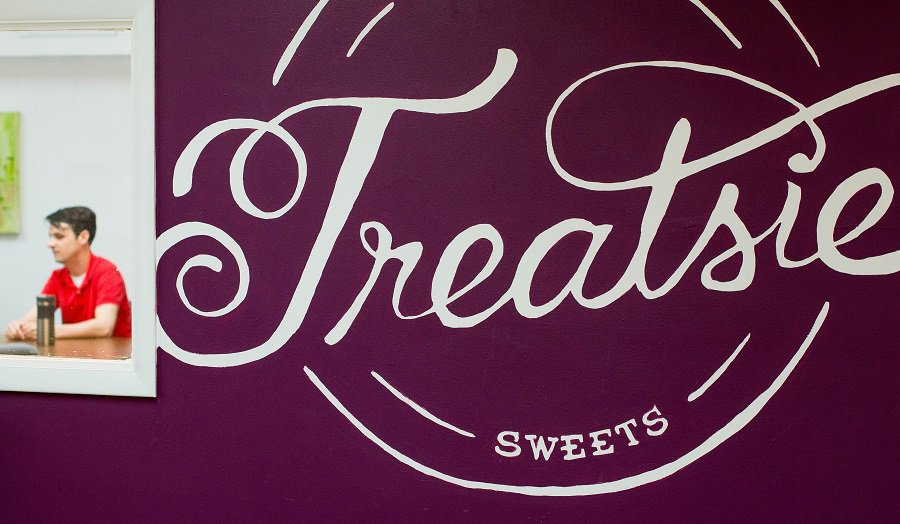
Attention all sweets fans (and who doesn’t love a good chocolate bar?), I’m pleased to introduce you to your new favorite thing: Treatsie. Founded in 2013 by James Walden and Keith Hoelzeman, Treatsie is a subscription box and e-commerce service based in Little Rock, Arkansas that specializes in artisanal chocolates and sweets.
Name: Jamie Walden & Keith Hoelzeman
Location: Little Rock, AR
Title: Co-Founders
Company: Treatsie
What it is: Subscription box and e-commerce service that specializes in artisanal chocolates and sweets
Educational Background: Jamie: Bachelor’s degree in writing from UCA; Keith: Bachelor’s degree in history-poli sci from Arkansas Tech
What inspired you to start Treatsie?
Keith: I had a job several years ago where I was selling software on the West coast, so I traveled a lot. Every other week I was on a plane traveling somewhere and I would always bring my wife back something small, typically from a sweets provider.
I was looking for a gift for her and I thought I’d buy some nice chocolate for her from one of these sweets shops online. I googled something like “artisan chocolates” and I got 8 million results. There was nothing filtering what was good or what was bad so I never made a purchase — and that bothered me.
And I was always looking for something to do — it wasn’t a matter of if I was going to start something, I wanted to do something and this seemed like a good idea. My wife was one of the first 1,000 subscribers to BirchBox, so I got to see that very early on.
Jamie: He brought the idea to me and he had noticed the similarity between Birchbox and what we were wanting to do. Makeup is very much an emotional purchase — it’s not something that you necessarily have to have to survive but it is something that makes you feel good — and sweets are the same way. Nobody needs a chocolate bar, but it makes you feel good. With that model, there were a lot of similarities and we were like “Yeah, let’s try it.”
What’s it like running a business with a friend?
J: It actually is pretty good. There are times when we disagree on stuff, but we tend to try and be really data-driven here. There’s no opinion about data, it’s very clear and very factual. If we disagree on something, we’ll say, “Well, how can we test this?” And see what is actually the best course and let the data tell us what to do.
K: With any relationship, you have moments where you’ll disagree. I think when we disagree on something it’s that we each have something in mind that might be what we feel is in Treatsie’s best interest and that’s what we always try to act on. The other one is always coming from a good place. When people disagree on something here, it’s usually about what’s best for the customer and what’s best for Treatsie and maybe it’s something we weren’t thinking of.
J: And it’s great having a co-founder, too. I would not have been able to get where we are today (and I think Keith might echo the same sentiment). We both think a lot differently. He’s really analytical and logical; I tend to come from more of a creative background, so it’s really helpful having a cofounder.
Did you jump into Treatsie full-time? Was Treatsie ever a side-hustle?
K: We launched the Kickstarter in January of 2013, it hit 150% of its goal, and we actually went live selling products on our site in March [that same year].
We sold out in three days. That was when we kind of had a moment when it was like “Okay we’re on to something a little bigger than what we anticipated.” We shipped our first products in April. We did a fundraising round in October of 2013 from some investors here in Arkansas, and that enabled us to come on truly full-time and work on building the business, hiring people, and moving into a new location.
When we started Treatsie, we were fulfilling orders out of my house and a church that was kind enough to let us use some space. Then we moved into a small 1,000 sq ft facility and then moved here and took over more space here and it’s been very much a learning experience with the different growth pieces that have come along with that.
Treatsie grew really suddenly. Were you relying on personal savings to start the business? Or was it investment-driven?
K: It’s been customer-driven mostly. Investor and customer-driven. That’s been one of the benefits of Treatsie — we are a consumer business and with the subscription basis it provides a decent amount of consistent revenue every month. We don’t truly ever start a month off at zero dollars, not knowing where any money is going to come from like traditional retailers may because we have a subscription model. Investors like it, we like it because it makes planning a lot easier.
That being said, one thing I find important as an entrepreneur, keeping your personal — and we both like nice things like everyone else does but you have to be mindful of your own spending and obligations. I’ve talked to numerous people who want to start a business and they’ve got two car payments, a big nice house payment, things like that, and what you have to be aware of when you’re starting something. As an entrepreneur, your personal cash flow is secondary to the business, at least for a while — until the business gets up and running to a point where it can actually sustain you, especially when you have employees who depend on your business for their living. You have to make sure you’re not living a lifestyle that the business can’t support.
J: It’s not just secondary, your personal cash flow is the last line item in the budget. All the team gets paid, the investors get paid, the customer is made happy. If there’s money at the end of the day, then we take salaries.
One of the things that’s been really helpful for us is when we first started, we didn’t fully anticipate that we were going to transition and keep making the same salaries and that sort of thing. And we, for a good amount of time, did freelance work on the side to support that, to make sure that our salaries were secondary to the business. If you’re thinking of starting a business, and you have a skillset , that is a really effective way to make the leap but know where some income will be coming from if things don’t take off as quickly as you might hope.
We don’t have any personal debt with Treatsie. None of the stuff that we’ve done, the loans that we’ve done, are personally guaranteed. We made a very serious point of that because you can see entrepreneurs go into debt all the time go into huge financial debt. Not only is that a bad thing, but it affects how you approach the business. If you’re stressed out about personal debt, you can’t lead with a clear head. There’s lots of new debt instruments these days that are just based on revenue and not personally guaranteed. It’s not the old “bank loan is the only way to go.” There’s lots of different instruments you can tap into without putting your personal finances at risk.
What’s been the best part of expanding? What has been the hardest part?
K: I think being able to bring in new people. Seeing what fresh talent can do for your idea and hearing the ideas that other people have that they can bring to the table. That’s one of the things — we don’t hire people exactly for the position we’re looking for. We try to hire the smartest, best, brightest that can add something to what we’re doing. Especially within that particular position and we’re willing to take a chance on somebody who may not fit the mold perfectly and seeing what they can do with it. We’ve had some really good successes with that.
J: It’s really rewarding, too, when you start to get credibility outside of the state. We were in InStyle Magazine and their quote was like “These boxes are as close to magic as you can get.” That and USA Today and Buzzfeed, when these people start recognizing you and your company that’s really rewarding.
Even more rewarding that that, to me, is, I’ve been places where I’ve met someone, told them what I did and they say, “Oh wow, you guys are in Arkansas? I had no idea.” Expectations for some weird reason are set lower for things in Arkansas, but it’s like “No, we’re pretty smart people here, we can build pretty amazing things.”
What does a typical day look like for each of you?
J: I come in and my team, we do a daily huddle. Just a five to 10-minute meeting tops, just to see what everybody is working on, if there’s any obstacles I can remove or any support I can provide in any capacity. Then I get into my daily workload. I use a project management tool with my team called Asana. It’s a really good tool for prioritizing your projects.
I work a lot with our pay per click agency — we do a lot of Facebook marketing — so I spend a lot of my time on that. I still do a lot of the web development I’ll work on during the day, fixing bugs tends to not be nearly as fun, but it has to get done with an e-commerce site. That’s the majority of what my days typically look like.
K: Mine usually starts pretty early. I’ll come in, I try to be the first person here — at the very latest, second. That’s just something to show the team we’re putting in the crazy amount of hours but we’re also really busy while we’re here. I usually check emails really quickly. I don’t look at all of them, but if there’s something that needs to be addressed that happened overnight or whatever.
Part of my main focus is product and finance, so I’ll work with investors if any of them have any questions or feedback, we give weekly updates and monthly updates with our investors and our board of directors. I’ll update them if anything needs to be updated — go through all of that.
We’re actually in the middle of a transition where we’re going to be private labeling all of our own products and making all of our own products and really pushing innovation in sweets. I’m trying to immerse myself even further into what the consumer packaged goods world looks like and that’s resourcing new prospective vendors to help us create these products, following up on ones that we are possibly working with, looking for new ideas that can help the business, looking if there’s any new additional investors we need to try to bring in, things like that.
That’s where most of my time splits off. We usually leave here sometime between 5:30 and 6 every day. You go home, you take a little break, and then you get back to work a little later. There’s definitely a balance there you have to try to strike, but I don’t know that work-life balance truly exists for anybody. I think you spend more of your time working, in reality, that’s the nature of it.
How do you define success?
J: Hitting the goals that we set out to hit. One of the things we’ve gotten a lot more focused on this year is setting very clear goals and objectives for the company. We’re currently working on Q2 goals with the team and how those goals align with the overall company goals. Really making sure you vet them, really making sure they’re aggressive but achievable, and then hitting them and, we hope, blowing them out of the water. But I don’t think you can succeed unless you knew what your expectations were beforehand.
K: Creating a product and a business that become self-sustaining, that people actually want. And that involves definitely goals and objectives, but the consumer at the end of the day will be the judge of whether you’re successful or not — and if you can create a product that, in various ways, people want to purchase (and that you’re not just tricking them into purchasing), then there’s some measure of success there.
There’s different levels of it — you could become the next Walmart or you could have a successful business that operates and employs 20 people and makes a good living for people. I don’t define it by a certain number of dollars in the bank, it’s about creating something people want to purchase.
J: Creating something of value for your team and for the market.
What’s been the hardest part of starting your own business?
J: I’ve got like 47. I think initially the hardest part was just the sheer risk. I went from a job that I loved and really struggled with the decision to leave. It was a very stable, well-paying job and going into doing something that’s more like “Well, we might not be going on a trip this year. And we might not be eating out as much.” That’s a really tough hurdle to overcome. Freelancing really helped because I knew where some income was coming from, but that was a big hurdle.
K: I think for me it ends up being finding some level of balance, as much as you can. There’s no true work-life balance, but making sure your personal life doesn’t suffer. It takes a lot of effort and you have to be deliberate about guarding your time, not just at work but at home because work creeps into the evening hours. And the early morning hours.
But if you’re not happy at home, you’re not going to be happy at work, so you have to make sure you’re taking care of all of those different obligations. It’s hard. Every time you think you’re at that point where it’s the hardest thing ever, something else gets added on and it’s even harder. It’s just making sure for me that I guard those things as well as I can — which for me, has meant saying no to a lot more things than I used to.
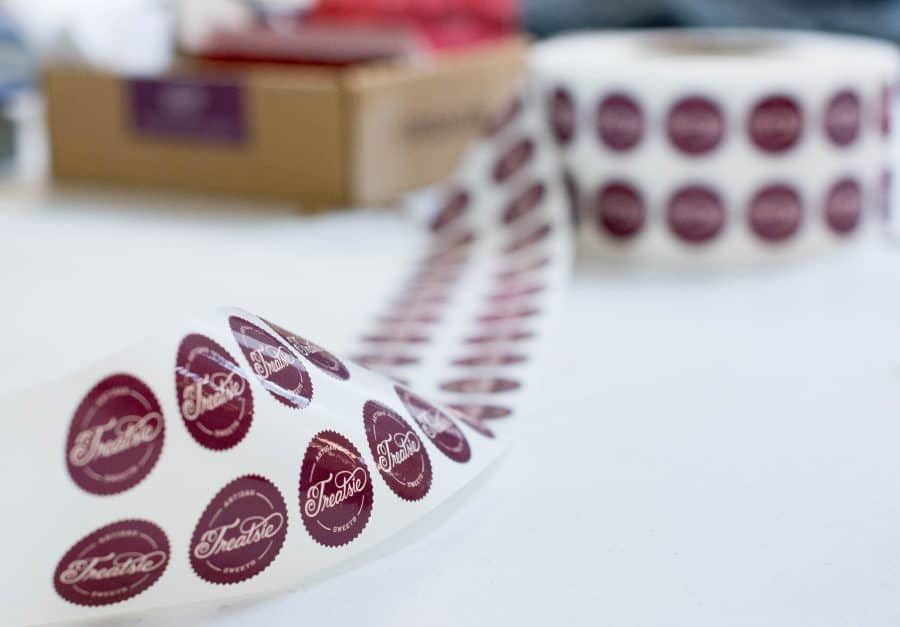
How do you balance all of your projects with your personal life?
K: You have to prioritize. Prioritize projects with the biggest impact as well as things that just have to be done — like shipping orders. My wife is always amazed because I don’t talk about Treatsie that much with her — when I’m with her we’re usually talking about family-related things. Work stays work.
J: When we first started Treatsie, I worked a lot at night as well as during the day. If I were to do it again, I would tell myself to be cognizant of how much work you’re doing at home. I’ve gotten to the point that when I go home, I keep my computer closed until my wife goes to bed because she goes to sleep fairly early. Then I’ll open my laptop back up and work from 9:30-midnight or whatever.
K: It just goes back to if you’re miserable at home, you won’t do your best work. You have to make sure you’re taking care of things at home that need your attention. It takes a lot of work — it doesn’t just happen.
One thing I’ve done is make myself completely unavailable on Sunday morning. I’m not reachable at all until Sunday afternoon. It’s no big deal, we just go to a bagel shop, but I don’t even take my phone with me. That started after Treatsie — if it weren’t for that, I would be answering emails and things like that constantly.
J: We try to apply learnings from that to the office environment, so we don’t care what time people come in, we don’t care what time they leave, we don’t care how long you take for lunch, we don’t care how many errands you have to run.
K: Unlimited vacation, things like that. Anymore, and this isn’t just regarding starting your own business, but anymore when you work for a company with email on your phone you’re never really off the clock.
I’ve worked places where they’ve never accounted for the time I worked in the evening, but there was some unwritten expectation that you’d be putting in some extra hours. But if I came in 15 minutes late from lunch, my boss would be like “Wow, take a long lunch today?” We’re focused on creating an environment that is fair to everybody. We expect a lot of the people who work here and I think they put in well over their 40 hours every single week. I’m not worried about that at all, it’s just a matter of being respectful of their personal obligations in life.
J: And, selfishly, it’s also a good recruiting tool. Our generation cares a lot more about work-life balance than we do about salary. So I would take a job that pays half of what I could possibly make if it was an environment like this. There’s only so much money you need in life and you can’t get back time and you can’t get back how it feels to work in an environment where everyone enjoys each other’s company. You’re seeing that a lot in the companies our generation are starting because that stuff is way more important than the really dictatorial and rigid style of management. We’re a small market, so if you’re going to recruit people who are talented, it’s handy to have those perks.
What are your hobbies? What do you do when you’re not working?
J: We like to cycle, but the number one hobby for my wife and me is traveling. That’s all we really spend our money on. We try to do a fun trip every year.
K: For me, spending time with my family whenever possible — even if it’s just going to the park on the weekends. If I have time, I cycle, I run. I like to do something active. We sell candy for a living — there has to be some balance! Reading, trying to learn as much as possible about things that are not just about sweets or business.
What’s next for you?
K: Developing our own products. We don’t ever sell or share our consumer data, so when a customer buys something or gives us feedback, we keep that to make our product better. We’ve been in business for a while, so we have data on subscribers in all 50 states and some large metro areas and we really feel like now is the time to be pushing the envelope in sweets innovation.
You see a lot of innovation happening at the micro level — with the small makers, one to two-person shops. They’re creating really innovative products but they’re not scaling and they don’t want to scale the business. We want to combine that micro-level innovation with the demand that is at the macro level because people who shop at your traditional stores want to purchase these innovative products, but can’t until a big enough company starts to make them. That can be up to two years later. We want to shorten that to about six months.
We want to have real ingredients, real products. Ethically sourced ingredients — that’s important to a lot of consumers. Really pushing the envelope with flavors — people like reminders of their childhood favorites — fancy versions of things like Ding Dongs. You can get really creative with what you want to do with sweets.
You’ve got to be wherever the customer is. It’s not about saying we want to be a wholesaler or we want to be an e-commerce company — it’s about being somebody who creates a product of value for consumers.
Try Treatsie today and get double the sweets with your first Treatsie box by using our link!
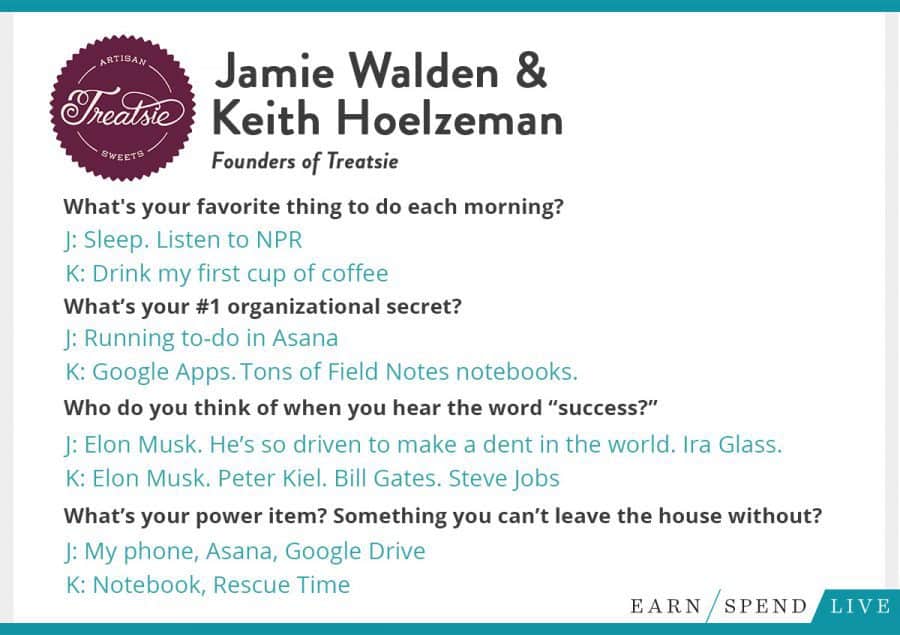
Last modified on April 17th, 2017

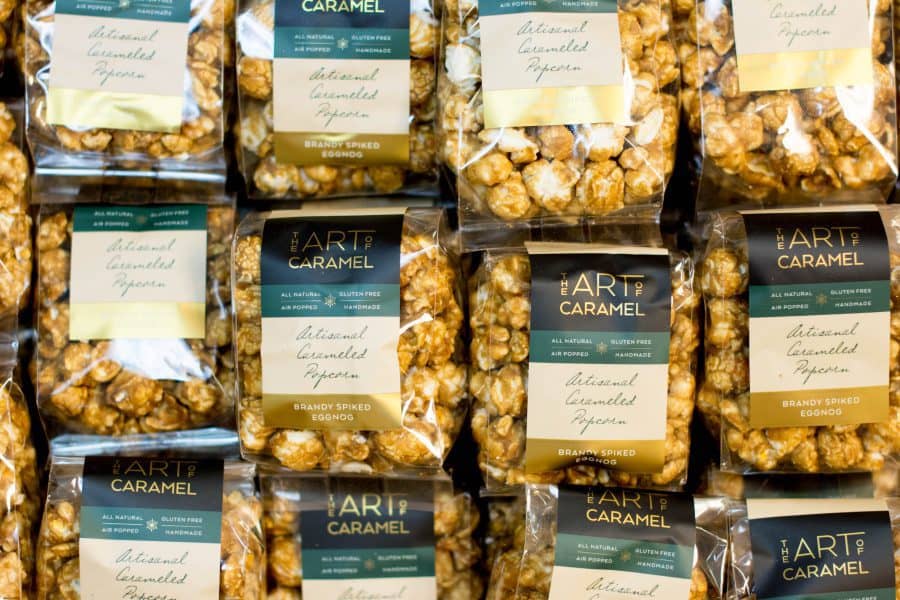
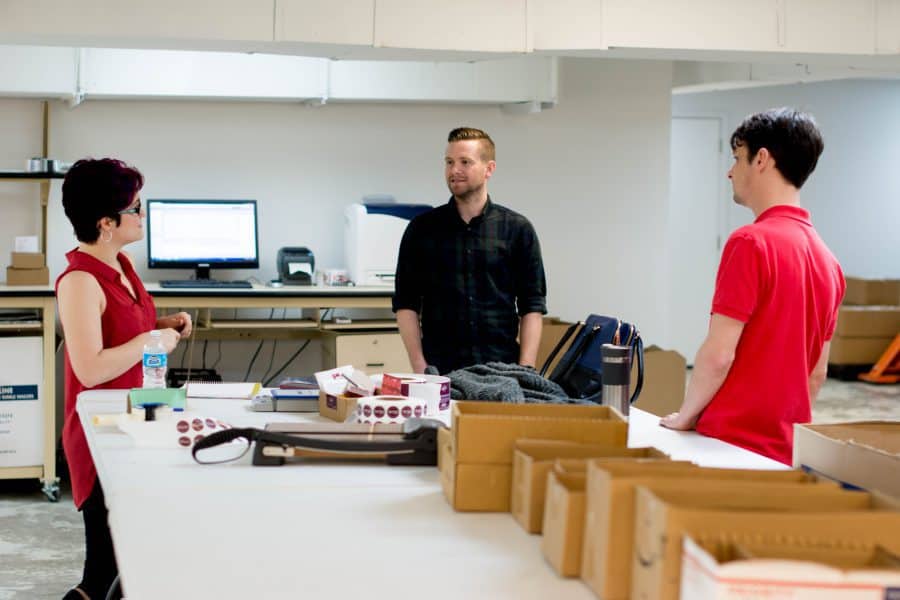

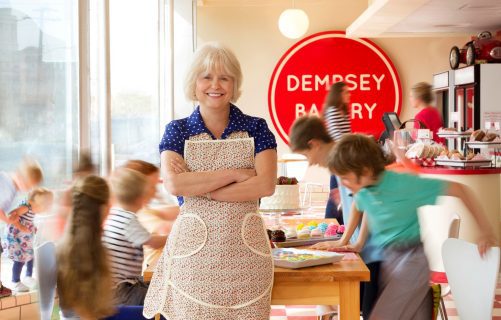



Show Comments +